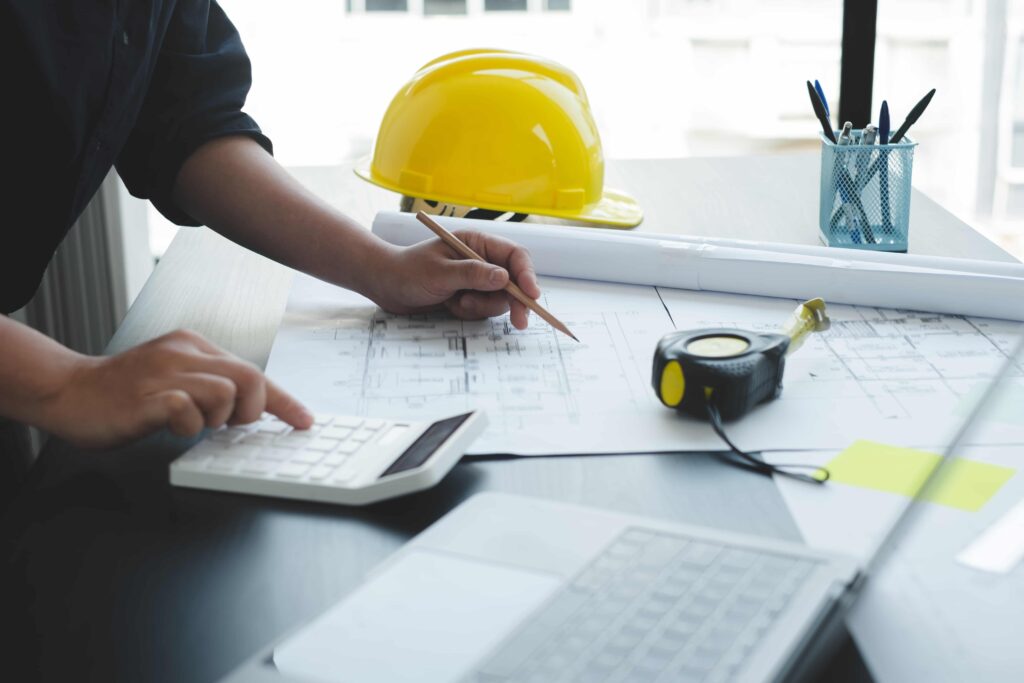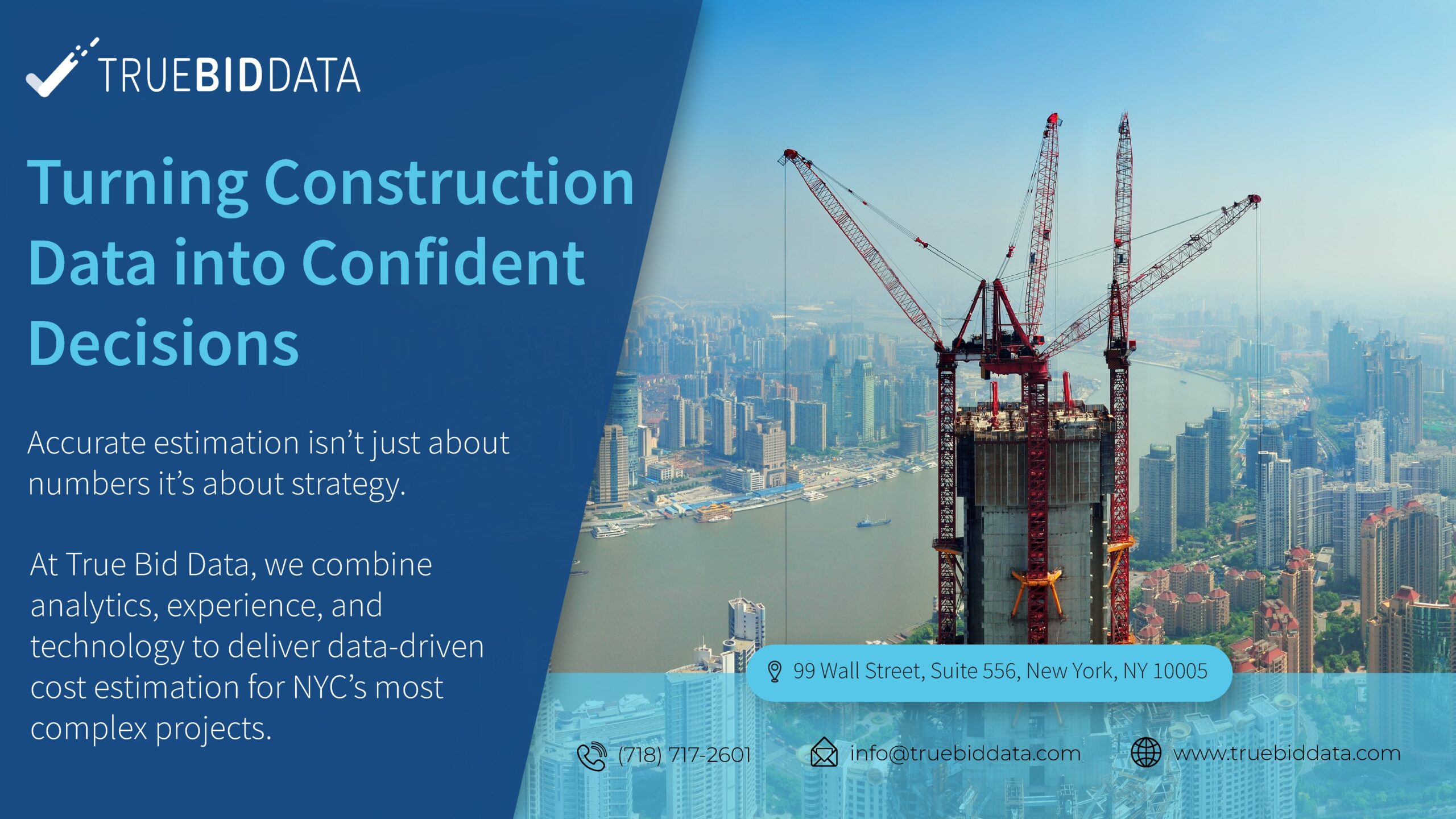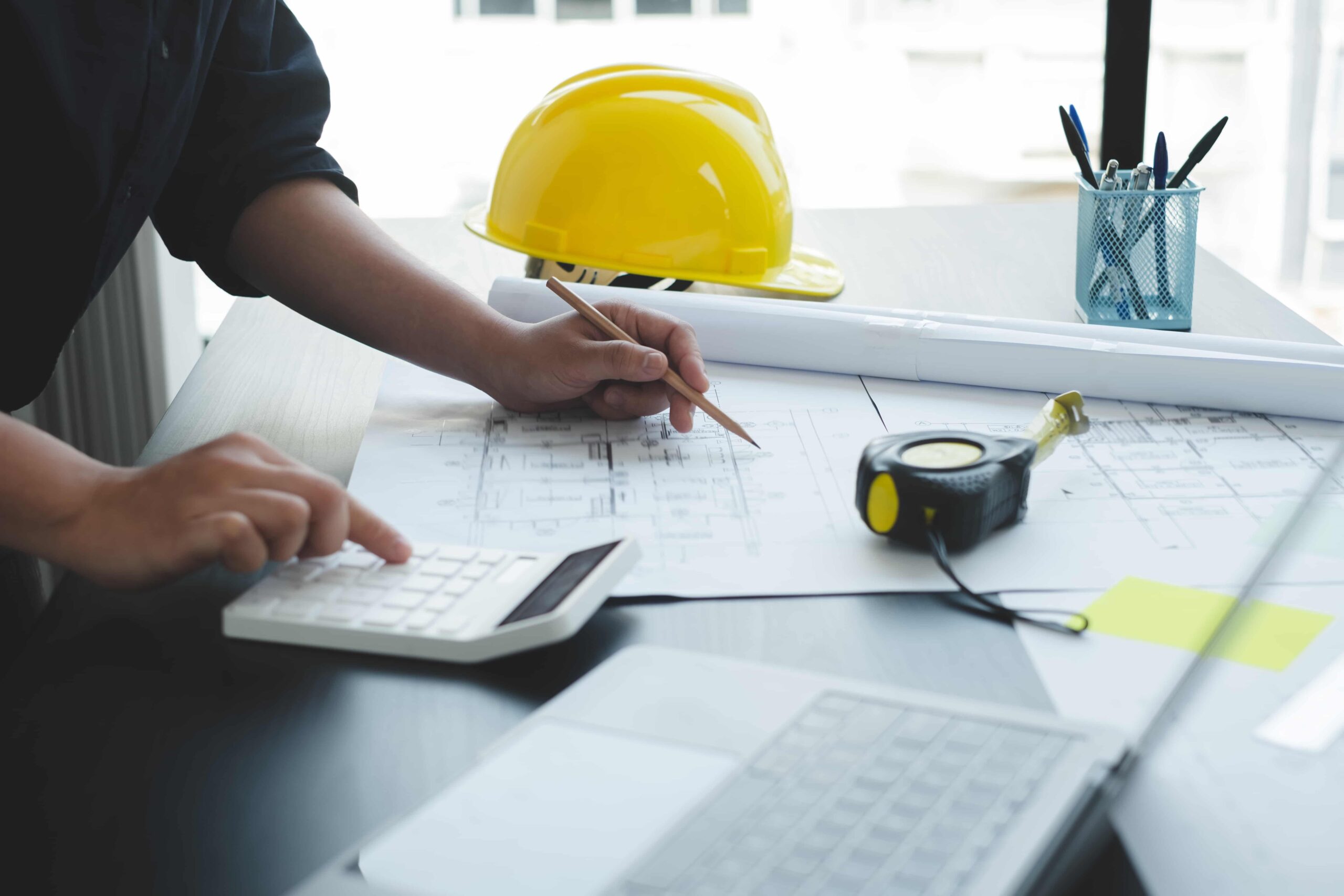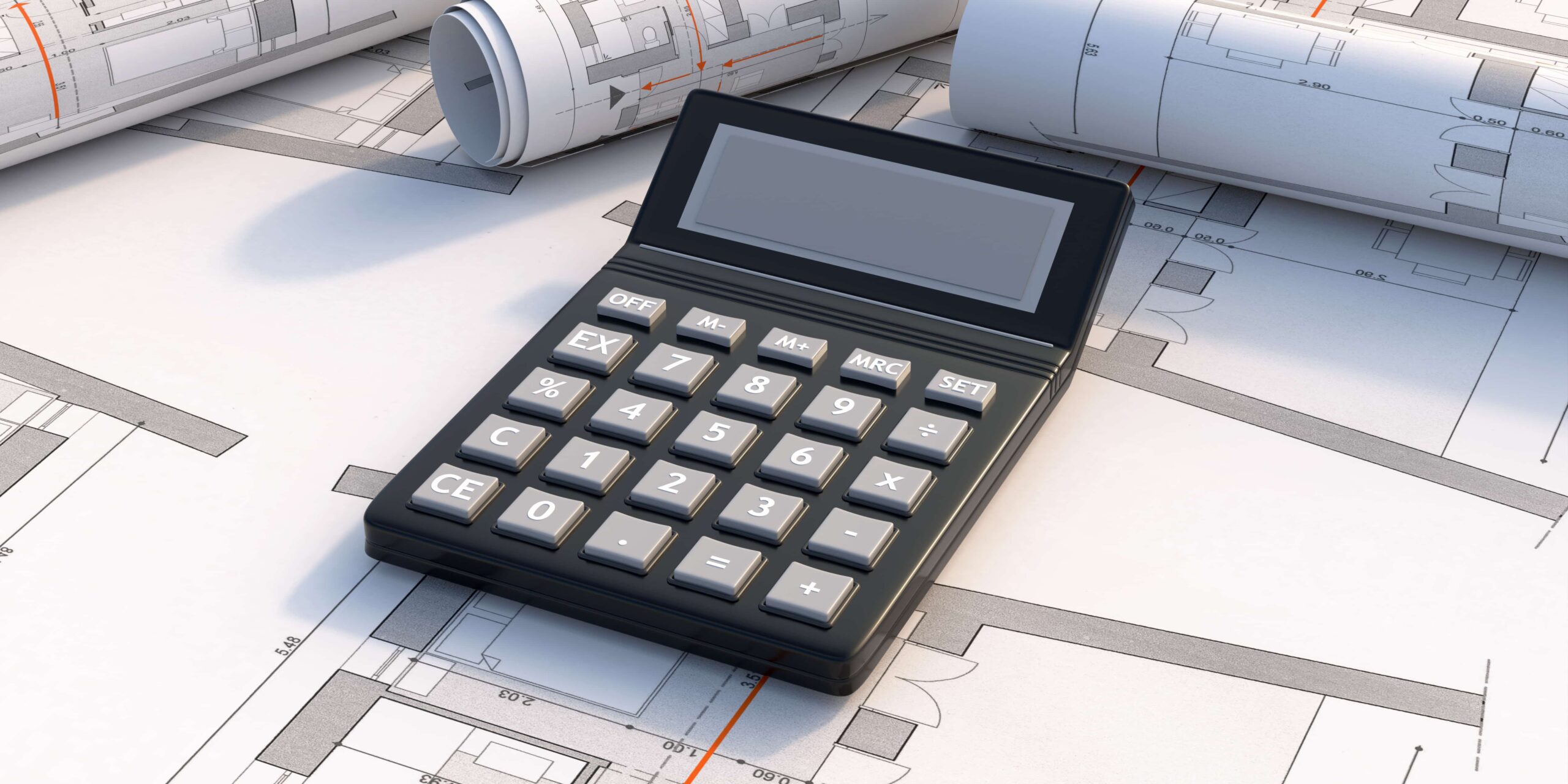
In New York City’s fast-paced and highly competitive construction industry, building construction cost estimation has become one of the most crucial elements of project planning. Whether for a mid-rise apartment in Brooklyn or a commercial renovation in Manhattan, success depends on the ability to forecast costs accurately, manage risks, and maintain profitability.
At True Bid Data, we focus on combining traditional estimation expertise with advanced analytics, giving construction professionals the tools to deliver reliable and transparent estimates that reflect real-world market conditions across NYC.
The Role of Building Construction Cost Estimation
Every construction project begins with an estimate but not all estimates are equal. Building construction cost estimation provides a financial blueprint that guides the entire project, helping stakeholders make informed decisions on scope, materials, labour, and scheduling.
A strong estimate ensures that the design vision aligns with financial reality. It helps owners understand total investment requirements, allows contractors to price competitively, and enables architects and engineers to make cost-conscious design adjustments early in the process.
Challenges of Cost Estimation in New York City
Building in NYC presents challenges unlike any other city. The complexity of its codes, limited site access, and fluctuating labour rates mean estimators must account for a wide range of variables:
- Labour Complexity – Union and non-union wage differences, overtime premiums, and trade availability.
- Material Volatility – Prices of concrete, steel, and finishes fluctuate due to global supply trends.
- Site Constraints – Tight access points and vertical logistics increase handling costs.
- Regulatory Compliance – Permitting, environmental, and safety standards often add extra layers of cost.
- Inflation and Escalation – Long project durations require accounting for future cost adjustments.
These factors make building construction cost estimation in NYC both a science and an art, requiring a balance of data analysis and local expertise.
Data-Driven Approaches to Estimation
The construction landscape is evolving from intuition-based forecasting to precision-driven estimation powered by analytics. True Bid Data emphasizes data-backed methodologies to refine every stage of building construction cost estimation, including:
- Real-Time Market Data – Monitoring material and labour prices through verified NYC vendor sources.
- Historical Benchmarks – Comparing new projects to similar completed ones for accuracy validation.
- Predictive Modelling – Using data analytics to forecast inflation, supply chain risks, and price escalation.
- Geographical Adjustments – Incorporating cost indices specific to each NYC borough.
These insights allow project teams to build estimates that reflect real conditions rather than generic national averages.
Components of a Building Construction Estimate
To achieve precision, estimators must break the total cost into key categories:
- Direct Costs – Labour, materials, and equipment tied directly to physical construction.
- Indirect Costs – Temporary facilities, permits, insurance, and supervision.
- General Conditions – Project management, logistics, and site overheads.
- Contingency and Risk Allowances – Coverage for potential scope changes or unknown factors.
- Profit and Markup – Contractor’s margin based on risk exposure and project complexity.
A detailed building construction cost estimation should always outline these categories clearly, ensuring transparency and accountability.
The Role of Digital Tools in Estimation
Technology has transformed how construction cost estimation is done. Modern platforms like PlanSwift, and RSMeans Online integrate automation and analytics to simplify complex calculations while improving accuracy.
Digital estimation allows for:
- Automated Takeoffs – Calculating material quantities from digital drawings in seconds.
- Integrated Pricing Databases – Applying local NYC labour and material rates instantly.
- Scenario Testing – Comparing different design options for budget optimization.
- Collaborative Cloud Workflows – Allowing real-time adjustments between estimators, architects, and clients.
With these tools, estimators reduce manual errors and increase consistency, resulting in data-verified reports that strengthen project confidence.
Value Engineering Through Cost Estimation
Effective building construction cost estimation also facilitates value engineering—a systematic approach to optimizing cost without sacrificing quality or performance.
By analyzing materials, methods, and design options, contractors can suggest alternatives that meet functional requirements at lower cost. For example, switching from imported stone façades to high-performance local composites can yield savings while maintaining aesthetic value.
Value engineering, when backed by data, creates win-win outcomes for both clients and builders.
Risk Management Through Accurate Estimation
Construction in New York City carries inherent risks—from material shortages to design revisions. A well-prepared estimate identifies these risks early, allowing teams to assign appropriate contingencies.
Data-driven estimation tools can simulate multiple risk scenarios, such as fuel price increases or supply chain delays, enabling project managers to plan financially and operationally. By embedding risk management into building construction cost estimation, projects become more resilient and predictable.
Strategic Importance for Contractors and Owners
Accurate cost estimation isn’t just about preventing overruns—it’s a competitive advantage. Contractors who produce clear, data-supported estimates build credibility with clients and are more likely to win bids.
For owners and developers, it provides a realistic view of cash flow requirements, financing needs, and return on investment. In NYC’s tight-margin construction environment, data transparency fosters stronger relationships between all stakeholders.
The Future of Building Construction Cost Estimation
The next generation of building construction cost estimation will rely heavily on artificial intelligence, automation, and predictive analytics. AI-driven tools will process massive datasets from local suppliers, weather patterns, and project histories to deliver near-instant, highly accurate cost forecasts.
True Bid Data is at the forefront of this evolution, empowering professionals with smarter estimation systems that combine industry experience with technology-driven precision. As construction becomes increasingly data-centric, these insights will define success across New York City’s building sector.
Final Thoughts
In a city as complex as New York, building construction cost estimation is more than a budgeting step—it’s the foundation of successful project execution. Accurate, transparent, and data-driven estimates enable stakeholders to control costs, mitigate risks, and achieve excellence from design to completion.
At True Bid Data, we continue to refine the art and science of estimation through advanced analytics, helping construction professionals across NYC build smarter, faster, and with confidence.




